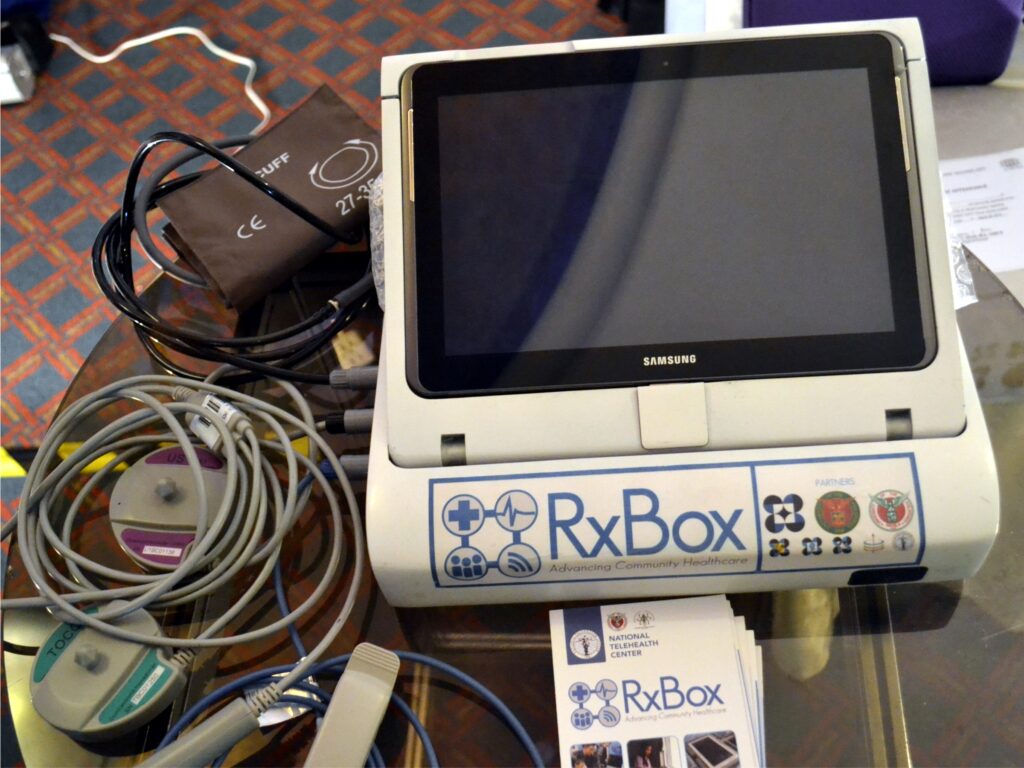Text and Photos by Henrylito D. Tacio
“Malaking pagbabago kasi alam namin na may gamit kaming pwedeng pagkatiwalaan. Dun pa lang sa pinapakita na resulta, alam no na kaagad kung anong gagawin mo,” said a public health nurse in Sabtang, Batanes. (“There’s a big change since we know we have a device which we can really trust. Just in the result alone, we already know of what to do.”)
“Ngayon, ang mga consults kahit mayayaman, pumupunta sila dito,” said a doctor from Tagaro in Villareal, Samar. “Empowered yung staff natin dito, hindi tulad sa ibang RHU (rural health unit) kapag walang doktor, walang konsulta. Dito naman bilib sila sa mga nurses at midwives.” (“Now, even rich people come here for consultation. Members of our staff are empowered, unlike those from other RHU that if there’s no doctor, there’s no consultation. Here, they have high regard of our nurses and midwives.”)
“Kung wala yung kagamitan na yun, hindi ko malalaman kung buhay pa kami ng anak ko ngayon kasi nanganganib na nga yung buhay namin, tapos hindi pa naming alam kung okay yung bata o kung okay yung blood pressure ko. Baka isa sa amin ang nawala ngayon,” a 19-year-old mother in Sabtang, Batanes said. (“If that device is not around, I don’t know if my child and I are still alive today since our lives were in danger then. We didn’t know if my child was okay or if my blood pressure was okay. Maybe one of us died already.”
All three are talking the same thing: RxBox. Touted to be “one of the most important tools generated by the research community,” it is a multi-component program designed to provide better access to life-saving health care services in isolated and disadvantaged communities in the country. It is among the efforts of the Department of Science and Technology (DOST) for the so-called “Smarter Philippines.”
The RxBox is a game-changer. Described as the “oldest electronic medical record (EMR) in the Philippines,” the prototype was conceptualized as early as 2007 by Dr. Alvin Marcelo, then National Telehealth Center director, and Dr. Luis Sison of the University of the Philippines Diliman College of Engineering.
RxBox is now available in some remote areas in the country, particularly those without doctors. At the height of the coronavirus disease 2019 (COVID-19) pandemic, the DOST distributed at least 1,000 units of RxBox.
“This (RxBox) would enable (health workers) to monitor patients without getting near them,” said Science Secretary Fortunato dela Peña during the “Laging Handa” public briefing. “They would be able to attend to more patients, check their vital signs, since this is very easy to use.”
Last December 22, three rural health units in Davao Oriental – Tarragona, Manay, and San Isidro – received RxBox telehealth devices from the regional office of DOST. Computer peripherals were supplied by the regional office of the Department of Health.
Actually, the RxBox is a product of NTHC’s collaboration with the Electronics and Electrical Engineering Institute of the UP Diliman and the DOST’s Advanced Science and Technology Institute. Funding for the project came from DOST’s Philippine Council for Health Research and Development.
RxBoxes are supplied in areas where doctors are hard to find, and traveling to the cities is a big problem.
“The RxBox can reduce the overall cost of healthcare by enabling health workers to diagnose, monitor and treat patients within the rural health facility, thanks to medical sensors inside the box,” says the website, rxbox.chits.ph.

RxBox demonstration 
RxBox
These are the devices found in a RxBox: blood pressure monitor, pulse oximeter, electrocardiogram (ECG), fetal health monitor, maternal tocometer, and temperature sensor.
The blood pressure monitor measures the patient’s blood pressure to detect cardiovascular problems, especially hypertension, a disease that can also worsen other chronic lifestyle disease conditions.
A pulse oximeter measures the level of oxygen in the patient’s blood and can help detect lung and cardiovascular problems – leading causes of death among Filipinos. ECG monitors the heart’s movement to pump blood throughout the body, helpful for those with acute and chronic heart problems, including pregnant mothers with cardiovascular problems.
The fetal heart monitor measures the baby’s heart rate while in the womb, helping detect fetal distress at critical times of the pregnancy and delivery. Maternal tocometer, on the other hand, measures the strength of a mother’s uterine contractions during labor and delivery, enabling early detection of distress to the mother and/or the baby.
Finally, the temperature sensor measures a patient’s body temperature. It can help detect fever, a common medical sign of infection, and other disease conditions.
Through the Rxbox, patients in far-flung areas may receive advice from doctors and health workers situated elsewhere.
“The RxBox can capture medical signs with its built-in sensors, save the data in an electronic medical record (using the Community Health Information Tracking System or CHITS), and transmit the information via internet to clinical specialists in the Philippine General Hospital,” explained Dr. Kristine Mae P. Magtubo, a health innovation consultant.
According to the health department, RxBox helps address the lack of doctors in the provinces, with 90% of specialists and 60% of tertiary hospitals clustered in urban areas.
RxBox is one of the government’s tools for the Kalusugang Pangkalahatan or Universal Health Care (UHC). “Inspite of the gains of the health sector,” said a statement, “the challenge of delivering improved health care services remains.”

